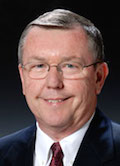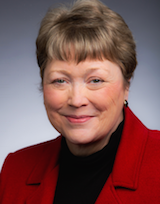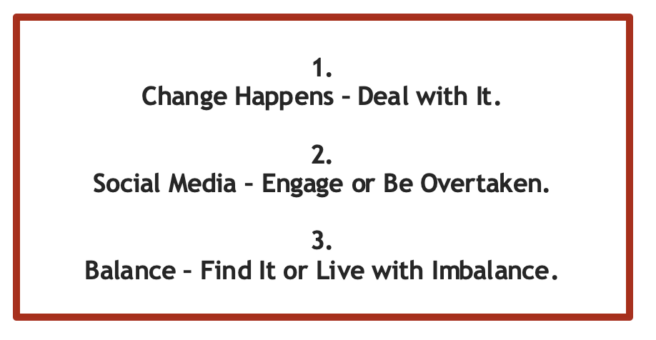How to Be a Proactive School Leader This Year
By Ron Williamson and Barbara Blackburn
As the 2022-23 school year begins, you are likely feeling a variety of emotions – excitement and anticipation for the new year but also concern and anxiety over how students and your staff will overcome lingering pandemic challenges and ripple effects.
Although there are many lessons that apply to the new year, we’d like to share three that can help you not only survive but thrive.
Change Happens – Deal with It

Ron Williamson
Change is a natural part of the life of any school. However, most organizations, including schools, resist change.
You’ve probably heard many of the following comments before. They are often used to justify keeping things the way they are. “Let sleeping dogs lie.” “If it ain’t broke, don’t fix it.” “Just wait a couple of years and this principal (superintendent) (pandemic) will be gone.” “We tried it once before and it didn’t work.”

Barbara Blackburn
Schools are expected to assume greater responsibility for helping students adapt, and indeed thrive, in a changing world. This means you need to examine the very essence of your school, your core beliefs, and how they impact teaching and learning, and then make the changes now that needed to fully prepare students for the future.
Over the years we’ve learned a lot about how schools change. We’ve learned that key stakeholders must be involved. We know that it almost always involves conflict and that real change takes time and sustained effort. Based on our experiences, there are three key concepts to keep in mind when negotiating change with teacher, staff and community.
First, the nature of change is complex, and that means everyone probably won’t agree with what is proposed. Next, disagreements are part of the process, and, in many cases, resolution of those disagreements makes the final plan stronger. Finally, some people will need more time to agree to the change, and others will need more information. It’s important to address their concerns. As you consider these concepts, keep in mind, change happens. It’s your choice how to deal with it.
Social Media – Engage or be Overtaken
Similarly, social media will impact you and your school. Your choice is what to do about it. You can ignore it and hope nothing bad happens, or be proactive in using social media yourself to help your school in positive ways. Keep in mind that social media platforms allow you to build relationships with your stakeholders, and it’s up to you what that relationship will look like.
Schools that are the most effective using social media consider it a two-way process, one in which they share information but also listen. They engage their stakeholders in a variety of ways, using social media as a tool to build more engagement. One principal we know describes monitoring social media as her “early warning system” that alerts her to emerging issues that will need to be addressed.
We assume social media is a communication tool, which it is. Social media outlets can be effective in sharing standard information, but their nature also lends themselves to more urgent information, such as emergency and safety information. You might also use social media tools such as Calendly for scheduling meetings in a user-friendly manner.
Some schools use social media for professional learning for all stakeholders. For example, one school we worked with used Facebook groups for parent-teacher book studies, and another one used Twitter chats to discuss focused topics, such as how to help your son/daughter in particular subject areas.
Work with faculty and staff to be proactive with social media. Find ways to share positive messages about your school as well as ways to understand your stakeholders. If not, in today’s online world social media may overtake you and you’ll be responding to it from a defensive position.
Balance – Find It or Live with Imbalance
The final key to thriving during this school year is finding balance in your life. Finding the balance between personal and professional responsibilities is a struggle for many people but especially for school leaders.
Principals find balance to be a struggle because of the complexity of their job, the extended school day, and the expectations from both senior leadership in their district and from families and community (Whitaker, 1996). The prevailing idea that school leaders are available any time, any day of the week adds additional stress.
While the importance of work-life balance is well documented, there is no single strategy or approach that works for everyone. Balance, in the truest sense of the word, is not about compartmentalizing your life. As David Allen, in Getting Things Done (2001) noted, it’s about being appropriately engaged with what you are doing in the moment. Principals have developed a number of strategies to help organize the tasks and devote their time and energy to their most important priorities. We’d recommend these general strategies to help you find balance:
► Assess where you are and where you want to be.
► Set realistic goals and expectations.
► Create structures, including appropriate limits, to manage your own work-life balance.
Ultimately, finding a way to achieve work-life balance will allow you to run a marathon, not a sprint, and be a successful leader.
A Final Note: Thriving, Not Just Surviving
Although your job requires you to tackle many tasks, we’ve found that – in these times – dealing with change, engaging in social media, and achieving work-life balance are three that will help you be successful throughout the year. Find ways to incorporate these three proactive lessons now, and you will not just survive; you will thrive.
References
Allen, D. (2001). Getting things done: The art of stress-free productivity. Viking.
Whitaker, K. (1996). Exploring causes of principal burnout. Journal of Educational Administration, 34(1), 60-71.

Dr. Barbara R. Blackburn, a “Top 30 Global Guru in Education,” is a bestselling author of over 25 books and a sought-after consultant. She was an award-winning professor at Winthrop University and has taught students of all ages. In addition to speaking at conferences worldwide, she regularly presents virtual and on-site workshops for teachers and administrators. Barbara is the author of Rigor in the Remote Learning Classroom: Instructional Tips and Strategies from Routledge/Eye On Education.




































